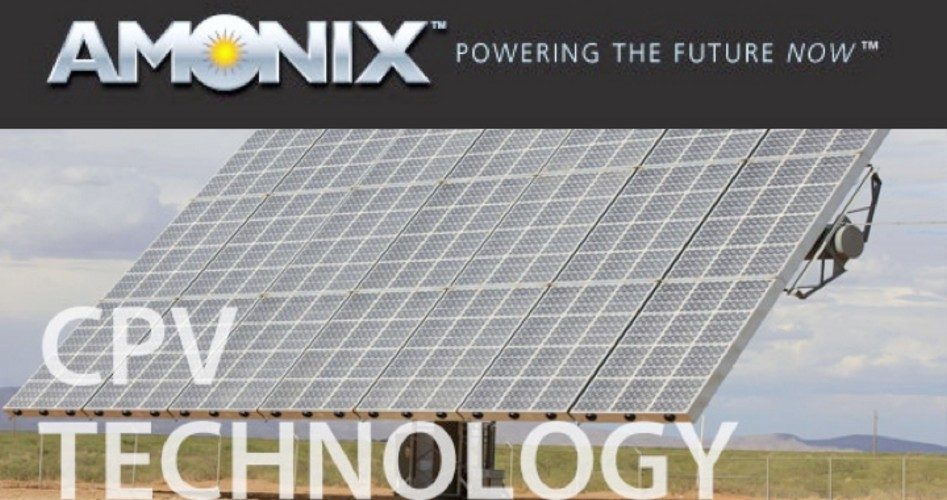
Another American solar firm is purportedly in financial disarray after receiving millions of dollars in grants from the U.S. Department of Energy (DOE). Only a year after it opened, the Amonix solar manufacturing plant located in North Las Vegas has idled production, leaving serious questions about the company’s financial viability and whether taxpayers will be burdened with another multi-million-dollar DOE-subsidized boondoggle.
Astonishingly, the company is only 14 months old, yet it was granted $6 million in federal tax credits and a $15.6 million grant in 2007 for research and development. So how did a company without any kind of track record qualify for this taxpayer-funded jackpot? The Las Vegas Review-Journal seems to have the answer:
Nevada Sen. Harry Reid, U.S. Rep. Shelley Berkley, D-Nev., and Gov. Brian Sandoval were among the political leaders who lauded the company when it announced it would start making solar panels in the Golden Triangle Industrial Park. Reid in particular has pushed for solar energy research and development in Nevada, drawing parallels between the value of Nevada sunshine and Saudi Arabian oil.
Sen. Reid helped preside over a May 2010 commemoration to “flip the switch” at the first Concentrated Photovoltaic solar energy plant — which Amonix designed and manufactured — owned by the Southern Nevada Water Authority. At the event, Amonix unveiled its plans to use $5.9 million in federal tax credits from President Obama’s Advanced Energy Manufacturing Tax Credit to build its facility.
“I applaud Amonix for taking advantage of a tax credit in the Recovery Act to build a new manufacturing plant in Southern Nevada and to put nearly 300 Nevadans to work,” Reid cheered. “This type of project is just what we need in Nevada. Not only will the new solar facility create permanent green jobs, but it further cements Nevada’s role as the leader in clean energy production. Amonix’s solar technology is now being put to work treating water at SNWA’s River Mountains facility, and soon the company will create even more jobs here when it starts manufacturing this technology right here in Southern Nevada.”
The Nevada senator’s expansive role in championing the government-subsidized project goes without question, as Amonix CEO Brian Robertson lauded Reid’s chief position in accelerating the Obama stimulus package through Congress. “We recognize Senator Reid’s active role in passing the Recovery Act,” Robertson said. “It is bringing new jobs to Nevada while modernizing our electric grid to enhance the security and reliability of our country’s energy infrastructure.”
Former Amonix employee Rene Kenerly said the facility has been out of operation since the beginning of May, when he was laid off. When it was at its peak production, he added, the manufacturing plant had 700 employees working to assemble solar panels for a utility firm in Colorado. “I don’t think they had a lot of training,” Kenerly attested. “There were a lot of quality issues. A lot of stuff was coming back because it had some functionality issues.”
Unfortunately for Reid, Amonix would be the second Nevada-based green energy project to slip into financial ruin. Nevada Geothermal, a renewable energy producer that received a $98 million federal loan guarantee, disclosed in a recent SEC filing that “material uncertainties exist which cast significant doubt upon the company’s ability to continue as a going concern.”
Like he did for Amonix, Reid was instrumental in securing government support for Nevada Geothermal. In fact, according to the New York Times, Reid “pressur[ed] the Department of Interior to move more quickly on applications to build clean energy projects on federally owned land and urg[ed] other member of Congress to expand federal tax incentives to help build geothermal plants, benefits that Nevada Geothermal has taken advantage of.”
Of course, Amonix is not alone in its fiscal misfortunes, as numerous other government-subsidized solar firms are either failing or have already gone insolvent. Solar panel maker Solyndra, for example, filed for bankruptcy last September after securing a $535-million federal loan guarantee from the Obama administration. Colorado-based Abound Solar, which was awarded a $70-million loan guarantee by the Energy Department, filed for bankruptcy in June, adding to the growing list of failed DOE-sponsored green-tech ventures that have placed billions of taxpayer dollars on the line.
President Obama has not only touted Amonix, he has incessantly lauded his economic stimulus law — which distributed billions of dollars to “green” energy companies — for its alleged accomplishments in creating jobs and advancing clean-energy technology.
“Now, the only problem we have is these credits were working so well, there aren’t enough tax credits to go around,” Obama said in July 2010. “There are more worthy projects than there are tax credits. When we announced the program last year, it was such a success we received 500 applications requesting over $8 billion in tax credits, but we only had $2.3 billion to invest. In other words, we had almost four times as many worthy requests as we had tax credits.”



